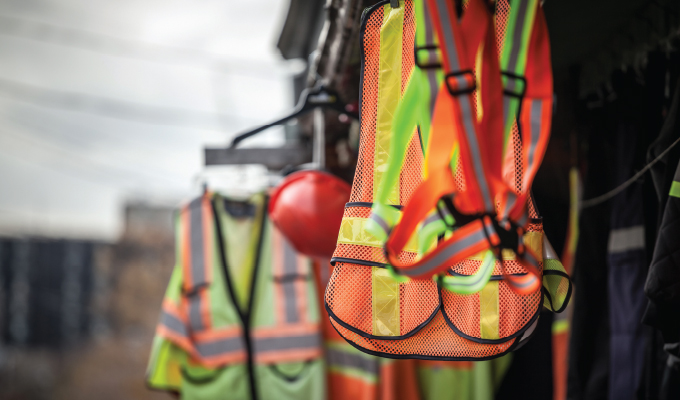Investing in people, processes, and systems is on the top of most construction companies’ to-do list. Knowing how to best improve these areas is the most effective way to improve business. Below is a brief Q&A with David Wald, CEO of Aclaimant, a company with safety, risk, and analytics in one connected solution.
MCS: How can contractors effectively train workers to use tech at the worksite to improve their overall business?
WALD: The biggest hurdle contractors face when training workers to use technology at the worksite is tailoring the training to all generations in the workforce. Contractors must find creative and flexible ways to engage employees regardless of their age to ensure the tech training is resonating and is applicable to their specific roles at work. For example, this could mean swapping out the traditional webinar for a hands-on approach or interactive technologies where workers can test out the new technology on-site and receive feedback from managers and colleagues to make sure they’re using it correctly. Once employees have successfully been trained, organizations will see improvements to the overall business in terms of productivity and efficiency, but also as a means to better recruit + retain employees by giving them the ability to constantly gain new tech skills and progress in their careers.
MCS: What technologies are available to construction workers that are transforming the nature of their jobs?
WALD: While the construction industry has traditionally been slower to digital transformation, there are more and more technologies available that are transforming these worker’s day-to-day for the better. The biggest potential we’re seeing are tech tools that help contractors and employees control increased exposures and risk across jobsites. Construction companies’ biggest pain point is finding a better way to streamline workplace safety, near misses, and incident/claims management from the field. While many construction companies still rely on paper forms for incident reporting, this often leads to illegible or missing key information and slows down the entire incident management process. Providing these workers with a tech-enabled platform will create a more efficient way to report claims by allowing workers to file them in real time. Overall, this will reduce injuries and put safety back into the hands of construction contracts and workers.
MCS: Why will offering construction workers opportunities for skill development–such as using tech–also help industries attract and retain talent?
WALD: According to Associated Builders and Contractors, construction companies will need to hire 430,000 more workers than they employed last year to keep up with the demand for projects and as spending increases. By offering opportunities to train new hires and current employees to upskill and accelerate their careers, companies will not only be armed with an extra incentive to fill open roles but will also be meeting the needs of the modern employee who expects their employer to offer continual learning and advancement opportunities. In return, this will increase the retention of construction workers in an already competitive job market.
Contractors are also faced with challenges as the construction industry, as a whole, struggles to fill a large labor gap as they’re tasked with ensuring employees are properly trained to avoid injury and use beneficial technology that reduces potential injuries. As digitization in the construction industry continues to accelerate, it’s imperative that every employee must be able to effectively and successfully use tech on-site to manage safety activities and ultimately increase productivity.
MCS: What are your thoughts about the last 6 months of 2021 and the most important construction business segment to focus on for a dynamic 2022?
WALD: The only thing certain in the next 18 months is change and uncertainty, between pandemic, regulation, labor availability, shutdown risk, and technology. The best strategy construction businesses have is to be prepared and nimble by making the investments now so they aren’t caught in a tough situation without time to prepare.
CLOSING THOUGHT
The ultimate winners in this space will continue to be those who make investments in their people, processes, and systems to improve their ability to react to anything in the uncertainty ahead. By taking the time now to put digital infrastructure in place for safety and risk management, teams can respond quicker, adjust, and get back to work more efficiently than the competition, allowing teams to weather any storm that comes in 2021 or 2022. Safety and risk management, along with careful planning and organizational resilience, are the keys to the next 18 months and beyond and will serve everyone as we hope for the best and prepare for the worst in the months to come.
About the Author:
David Wald is CEO of Aclaimant. For more, visit www.aclaimant.com.
Modern Contractor Solutions, August 2021
Did you enjoy this article?
Subscribe to the FREE Digital Edition of Modern Contractor Solutions magazine.



